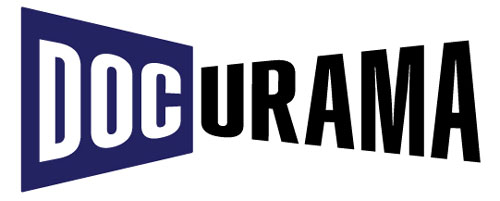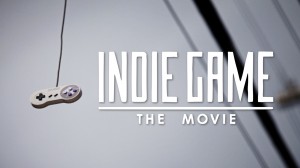
Filmmakers-Direct-to-Platform
We thought we’d start off 2015 with a bit about digital platforms that filmmakers can utilize directly, without giving rights to a distributor and without necessarily having to go through an aggregator. When I say “platform,” what I mean is a place on the Internet that film viewers would go to consume cinema. While filmmakers are always encouraged to distribute off their own websites and social media pages, that is not the subject of this blog. To accomplish DIY off the film’s site and social media pages, filmmakers are encouraged to work with Distrify or VHX, for example. For now we cover the following distinct platforms that filmmakers can directly access: MUBI, FANDOR, VIMEO, WOLFE ON DEMAND, and DOCURAMA (just a tad, and more will be discussed in a few weeks).
MUBI

MUBI is a curated video-on-demand subscription service.
MUBI describes its offering as a hand-picked selection of the best cult, classic and award-winning films from around the globe. “Every day MUBI’s in-house film experts select a great new film and you have 30 days to watch it. So there’s always 30 brilliant films to enjoy. We have a huge audience of passionate cinephiles from every corner of the planet who watch, rate, review and share great cinema.” See more at mubi.com/about.
Q: How film viewers can access it?
The service is the only subscription service available worldwide (193 territories). So whether you are in Venezuela or Vancouver you’ll be able to experience a beautiful collection of 30 hand-picked films. MUBI works on the web, mobile devices, internet-connected TVs and games consoles. On MUBI’s mobile apps you can download films and watch offline.
Financial model of platform How audiences pay (if at all) and how do filmmakers make money:
MUBI brings one new film to the platform every single day. Each film plays on the platform for a 30-day window. Revenue is split 50/50 with the filmmaker (or whomever is the rights holder) based on views over the 30-day run. A MUBI membership costs around $4.99 USD in most countries for a month or £2.99 in the UK or €4.99 in the EU.
Deals Offered to Filmmakers:
MUBI typically licenses films for a 2-year period, non-exclusive. They license by territory, but also do global deals or groups of territories.
How Films Get Onto MUBI:
MUBI takes films directly from filmmakers and also from studios, distributors and aggregators.
Q: What does your company do to drive audiences / consumers to this platform?
“Beyond the normal channels (digital, social, offline) we work in partnership with festivals and organisations [organizations] like Cannes, Berlinale, MoMa, AFI, Lomokino, Picturehouse Cinemas, we curate seasons and retrospectives, host screenings, run events… the list goes on! Also, in the UK (one of our focus countries) we have a mutli-level advertising campaign launching in 2015.”
Revenue ranges:
[This question is almost never answered by any businesses so don’t hold it against MUBI for not answering.]
Speaking from experience, however, we at TFC have enjoyed seeing hundred of dollars that eventually added up to some small version of thousands for a film that did not do better business anywhere else. In fact, I would say MUBI was a source of revenue that was particularly useful for a smaller art house film that would not be sought out on the more commercial platforms such as iTunes.]
What MUBI does to market films:
“We have huge communication channels offline and off. When a title is selected as the ‘film of the day’ all these channels are directed towards promoting that film. The difference with MUBI, for the filmmaker, is that instead of your film sitting in a library of a thousand films, your film is one of just thirty. Every day we send out a dedicated ‘Film of the Day’ email to hundreds of thousands of people globally, the email features “Our Take” – the reasons why we selected the film and why it’s worth watching. We build editorial context around films rather than leaving them fighting alone. We run one of the most respected online sources for film criticism, Notebook. So if your film is on MUBI it’s less about creating a long-term revenue stream and more about exposure for the film in a targeted, well-contextualised burst which can be a great complement to (or continuation of) a theatrical or DVD release. A film is on MUBI for 30 days but for those 30 it is the centre of our attention. It works for the audiences and filmmakers alike, great films can find people that want to watch them.”
Special initiatives MUBI has brewing (this is from December 2014):
“In the UK we’re currently showing a Godard retrospective, and right now in the US we have a Joe Swanberg double bill.”
New from MUBI: iPad and iPhone App
Follow MUBI on Facebook: facebook.com/mubi
Follow MUBI on Twitter: twitter.com/mubi
FANDOR

Fandor can be accessed via apps available through iTunes (iPhone, iPad) and Google Play (Android phones and tablets including Kindle Fire), and as a channel on Roku.
Fandor offers an extensive and rich library of over 6000 films, from around the world, in over 500 genres, and of all lengths, handpicked for people who love the transforming experience of great cinema. Fandor fulfills the promise of an online cinematic experience, marrying curation with contextual information for a global community of film lovers and filmmakers.
Fandor Availability / Accessibility:
Fandor is available in the US and Canada, accessible anytime to subscribers.
Financial model of platform—How do audiences pay (if at all) and how do filmmakers make money:
Fandor members subscribe on an annual ($90) or a monthly ($10) basis. Both subscription types offer a 2-week free trial. Subscription revenue is shared, with 50% going to the film rights holders, divided based on availability and audience viewership.
Deals Given to Filmmakers:
Because our model is a revenue share, the amount that filmmakers earn will vary based on viewership. 20% of the shared revenue is split among all films on the platform; the remaining 80% is allocated based on seconds of viewing to individual films.
Fandor Gets Films Direct From Filmmakers And Distributors:
Fandor has partnerships with hundreds of distributors and approximately 125 filmmakers (direct).
What Fandor does to drive audiences / consumers to its platform:
“We have an extensive marketing program that includes advertising, social outreach to over 160K fans, public relations, personalized email and integrated promotional campaigns. We also have a network of 4 blogs that addresses Fandor customers (The Fandorian), film aficionados (Keyframe), the film industry (Hope for Film), and filmmaker-to-filmmaker (Hammer to Nail).”
Fandor’s response to our request to share revenue ranges for films on its platform:
“We’re a private company and typically don’t share our financials and membership data.”
Special initiatives Fandor has brewing:
“We have two initiatives currently targeted to film festivals (Fandor|Festival Alliance) and to filmmakers (FIX). These initiatives are part of a larger effort to build relationships across the film world as part of a larger mission to advance and preserve film art and culture.”
See the release explaining these…
An example of a Fandor marketing campaign:
“Probably the best example is the Shocktober campaign we did for October. We showcased a different horror film each day through the month of October. The campaign was integrated across our ads, our website, our social networks, and email. We also did two video trailers. I’ve attached a .gif we used for social and email, and following are links to the videos. The campaign culminated in a day/date release of the remastered THE CABINET OF DR CALIGARI on Halloween.”

The Sin Within
Stranger Danger
VIMEO ON DEMAND
Browse available films and shows at vimeo.com/ondemand
Sign up vimeo.com/creatorservices/ondemand

Vimeo allows one to distribute films, series, and videos with all the power of Vimeo, its community, and its legendary
HD player. Anyone can use Vimeo On Demand – from established and first-time filmmakers to creators of video tutorials or video performances. “Vimeo On Demand helps creators distribute feature films, documentaries, series, episodes, TV shows, instructional videos, and more. It puts all the control in the hands of creators, who can choose to offer buy and rent options at their own prices, sell on Vimeo and their own website, worldwide or in select countries.”
Accessibility:
Vimeo On Demand is available worldwide and allows viewers to watch films on pretty much any screen, from computers and tablets to connected TVs, all in full HD (even 4K!). Vimeo On Demand is a global, open platform where any filmmaker can sign up and start selling their videos.
Financial model of platform:
Vimeo On Demand offers creators the ability to sell their movies to rent or own. “Viewers pay by credit card or PayPal. Creators earn 90% of the net revenue from every sale—which is the best deal in the film business!”
Direct-to-Filmmaker Distribution:
Vimeo accepts films first-time filmmakers and distributors.
Q: What does your company do to drive audiences / consumers to Vimeo?:
“Vimeo has 170 million monthly visitors and more than 30 million registered users. We regularly promote curated selections of movies from Vimeo On Demand to this massive audience on-site, via email and on social media. We also have ongoing paid marketing campaigns and publisher partners working to bring viewers to Vimeo On Demand.”
Revenue:
“Vimeo On Demand has been proud to power some of the most successful direct distribution releases ever. We are not allowed to share our users’ revenue data.”
What Vimeo does on marketing front for its films:
“Our Audience Development team is actively working to market films via our own platform as well as through digital advertising, social media marketing, and a growing list of publisher partners. Vimeo On Demand is the only direct distribution platform that brings a built-in audience and markets films on the platform.”
[NOTE: My colleague David Averbach has informed me that there is a way, for filmmakers who are allowed to offer VOD off their film’s website, but not other external sites, to hide Vimeo On Demand videos from vimeo.com.]
WOLFE ON DEMAND

The worldwide LGBT digital movie-watching platform!
Accessibility / Availability:
The platform showcases more than 150 films, more than 100 of which are available worldwide.
Financial model:
TVOD (Transactional Video on Demand via Internet) and Streaming (rental)
$3.99 streaming and $14.99 download for features.
$2.99 streaming and $9.99 download for docs.
Revenue to Filmmakers:
WOD split is 50/50. Wolfe have also entered into a strategic relationship with Vimeo and WOD will soon live on their platform. Wolfe’s site is powered, in part, by Distrify which takes a cut of revenues, as will Vimeo. Wolfe also notes that the partnering with Vimeo will also involve additional marketing opportunities.
Direct with Filmmakers and Distributors:
“We work with all kinds of filmmakers directly as well as distributors.”
Q: What does your company do to drive audiences / consumers to this platform?:
“Wolfe has been in the business of releasing LGBT films since 1985. With 30 years in the business we have the experience, relationships community good will and connections to help connect films with the audiences who want to see them. We utilize our mailing lists, social media, advertising, PR, community outreach and creative marketing as well as a wide array of other marketing tools and strategies. Wolfe’s strength is in consumer marketing. We dedicate considerable resources to unique programs domestically and abroad to drive traffic to WolfeOnDemand.com.”
Revenue Ranges:
[Like the others, Wolfe did not disclose.]
Special initiatives Wolfe has brewing:
Yes, stay tuned for some exciting news to be announced in late January 2015.
DOCURAMA

We’ll be covering this one in a few weeks as information is being updated…
As the name suggests, this platform focuses on documentaries.
The channel is available on iOS, Roku, XBox, Amazon Fire, Western Digital, Opera, to name a few.
We will send proper information about Docurama in a few weeks. For now, TFC recommends working directly with these platforms when they are a fit for your film. We will update about other platforms as we learn of them, if we think they are worthy of focus.
Happy direct digital distribution,
The Film Collaborative
Orly Ravid January 14th, 2015
Posted In: Digital Distribution, Distribution Platforms, DIY, Vimeo
Tags: digital platforms, Distrify, DIY distribution, Docurama, Fandor, film distribution, film distribution revenue, independent film, Mubi, subscription VOD, VHX, Vimeo, Wolfe on Demand
Indie Game: a distribution case study
This article first appeared on the Sundance Artist Services blog on August 13, 2012
written by Bryan Glick with assistance from Sheri Candler and Orly Ravid
Indie Game: The Movie has quickly developed a name not just as a must-see documentary but also as a film pioneer in the world of distribution. Recently, I had a Skype chat with Co-directors James Swirsky and Lisanne Pajot . The documentary darlings talked about their indie film and its truly indie journey to audiences.
 Swirsky and Pajot did corporate commercial work together for five years and that eventually blossomed into doing their first feature. “We thought it would take one year, but it ended up taking two. I can’t imagine working another way, we have a wonderful overlapping and complimentary skill set, ” said Pajot. “We both edited this film, we both shot this film. It creates this really fluid organic way of working. It’s kind of the result of 5 or 6 years of working together. I don’t think you could get a two person team doing an independent film working like we did on day one. It’s stressful at times but the benefits are absolutely fantastic, ” said Swirsky.
Swirsky and Pajot did corporate commercial work together for five years and that eventually blossomed into doing their first feature. “We thought it would take one year, but it ended up taking two. I can’t imagine working another way, we have a wonderful overlapping and complimentary skill set, ” said Pajot. “We both edited this film, we both shot this film. It creates this really fluid organic way of working. It’s kind of the result of 5 or 6 years of working together. I don’t think you could get a two person team doing an independent film working like we did on day one. It’s stressful at times but the benefits are absolutely fantastic, ” said Swirsky.
According to Swirsky, Kickstarter covered 40% of the budget. “We used it to ‘kickstart’, we asked for $15000 on our first campaign which we knew would not make the film, but it really got things going. The rest of the budget was us, personal savings.” The team used Kickstarter twice; the first in 2010 asking for $15,000 and ended up with $23,341 with 297 backers. On the second campaign in 2011, they asked for $35,000 and raised $71,335 with 1,559 backers.
The hard work, dedication, and talent paid off. Indie Game: The Movie was selected to premiere in the World Documentary Competition section at the 2012 Sundance Film Festival winning Pajot and Swirsky the World Cinema Documentary Film Editing Award . “[Sundance] speaks to the independent spirit. It’s kind of the best fit, the dream fit for the film. Just being a filmmaker you want to premiere your film at Sundance. That’s where you hear about your heroes,” noted Swirsky. “Never before in our entire careers have we felt so incredibly supported…They know how to treat you right and not just logistics, it’s more ‘we want to help you with this project and help you next time.’ It was overwhelming because we’ve never had that. We’ve just never been exposed that,” interjected Pajot
They hired a sales agent upon their acceptance into Sundance and the film generated tons of buzz before it arrived at the festival resulting in a sales frenzy. The filmmakers wanted a simultaneous worldwide digital release, but theatrical distributors weren’t willing to give up digital rights so they opted for a self release. “There were a lot of offers, they approached us to purchase various rights. We felt we needed to get it out fairly quickly and in the digital way. A lot of the deals we turned down were in a little more of the traditional route. None of them ended up being a great fit,” said Pajot.
Several people were stunned when this indie doc about indie videogame developers opted to sell their film for remake rights to Scott Rudin and HBO. Pajot explained, “He saw the trailer and reached out a week or so before Sundance. That was sort of out of left field because it wasn’t something we were pursuing.” Swirsky added, “They optioned to potentially turn the concept into a TV show about game development…As a person who watches stuff on TV, I want this to exist. I want to see what these guys do with it.” The deal still left the door open for a more typical theatrical release. However that was only the start of their plan.
“We had spoken to Gary Hustwit (Helvetica). We sort of have an understanding of how he organized his own tours. We had to make our decision whether that was something we wanted to utilize. Five days after Sundance, we decided we would and were on the road 2 weeks after… Before Sundance this was how we envisioned rolling out…[We looked at] Kevin Smith and Louis C.K. and what they’re doing. We are not those guys and we don’t have that audience, but knowing core audience is out there, doing this made sense,” said Swirsky.
They proceeded to go on a multi-city promotional tour starting with seven dates and so far they have had 15 special events screenings of which 13 were sold out! This is separate from 37 theaters across Canada doing a one night only event. They also settled on a small theatrical release in NYC and LA. When talking about the theaters and booking, they said theaters saw the sellout screenings and that prompted interest despite the fact that the film was in digital release. They accomplish all of this with a thrifty mindset. “P&A was not a budgetary item we put aside and if an investment was required, we would dip into pre orders. We didn’t put aside a marketing budget for it,” said Swirsky. Regarding the pre order revenue, they sold a cool $150,000 in DVD pre-orders in the lead up to release of the film. From this money, they funded their theatrical tour.
While the theatrical release was small, it generated solid enough numbers to get held over in multiple cities and provided for vital word of mouth that will ultimately make the film profitable. The grosses were only reported for their opening weekend, but they continued to pack the houses in later weeks.”I don’t look back at the box office. The tour was more profitable than the theatrical…They both have the benefits, having theatrical it gets a broader audience. It was more a commercial thing than box office,” said Swirsky. “We are still getting inquiries from theaters. They still want to book it despite the fact it’s out there digitally,” said Pajot. “We had this sort of hype machine happening. We didn’t put out advertising. Everything was through our mailing that started with the 300 on our first Kickstarter and through Twitter,” said Swirsky. Now the team has over 20,000 people on their mailing list and over 10,000 Twitter followers. In order to keep this word of mouth and enthusiasm going, the filmmakers released 88 minutes of exclusive content – most of which didn’t make the final cut – to their funders, took creative suggestions from their online forum and sent out updates on the games the subjects of their film were developing over the course of the two years the film was in production.
Following the success the film has enjoyed in various settings, Indie Game: The Movie premiered on three different digital distribution platforms. If you were to try and guess what they were though, you would most likely only get one right. While, it is available on the standard iTunes, the other two means of access are much more experimental and particularly appropriate for this doc.
It is only the second film to be distributed by VHX as a direct DRM-free download courtesy of their, ‘VHX For Artists‘ platform. Finally, this film is reaching gamers directly through Steam which is a video game distribution platform run by Valve. This sterling doc is also only the second film to be sold through the video game service, where it was able to be pre-ordered for $8.99 as opposed to the $9.99 it costs across all platforms. This is perhaps the perfect example of the changing landscape of independent film distribution. Every film has a potential niche and most of these can arguably be reached more effectively through means outside the standard distribution model. Why should a fan of couponing have to go through hundreds of films on Netflix before even finding out a documentary about couponing exists, when it could be promoted on a couponing website?
As they are going into uncharted territory, both Pajot and Swirsky avoided making any bold predictions.”It’s just wait and see. It’s an experiment because we’re the first movie on Steam. We’re really interested to look at and talk about in the future. I don’t want to make predictions…I do think documentary lends itself to that kind of marketing though. We’re trying to not just be niche but there is power in that core audience. They are very easy to find online,” said Swirsky.
Just because they are pursuing a bold strategy doesn’t mean they were any less cost conscious. “The VHX stuff, it was a collaboration, so there were no huge costs. Basically subtitles, a little publicity costs from Von Murphy PR and Strategy PR who helped us with theatrical. Those guys made sense to bring on,” said Pajot. “A lot of our costs were taken up by volunteers. If they help us do subtitles, they can have a ticket event, a screening in their country,” added Swirsky.
They also note that a large amount of their profit has been in pre-orders. 10,000 people have pre-ordered one of their three DVD options priced at $9.99, $24.99 and a special edition DVD for $69.99 tied with digital. While the film focused on a select few indie game developers, they interviewed 20 different developers and the additional footage is part of the Special Edition DVD/Blu-Ray. That might explain why it’s their highest seller.
All this doesn’t mean that any of the dozens of other options are no longer usable. Quite the contrary, they have also taken advantage of the Sundance Artist Services affiliations to go on a number of more traditional digital sites. Increased views of a film even if on non traditional platforms can mean increased web searches and awareness and could be used to drive up sales on mainstay platforms.
The real winner though is ultimately the audience. For the majority of the world that doesn’t go to Sundance or Cannes each year, this is how they can discover small films that were made with them in mind. The HBO deal aside, this is bound to be one incredibly profitable documentary that introduces a whole new crowd to quality art-house cinema. “We are still booking community screenings. If people want to book, they can contact us…We are thinking maybe we might do another shorter tour at some point,” said Pajot.
Here’s to the independent film spirit, alive and well.
Update Feb 2013: The creators of Indie Game have written their own case study discussing the many tools and techniques they used. Head over to their website for the full study.
Orly Ravid August 16th, 2012
Posted In: Digital Distribution, Distribution, DIY, Film Festivals, iTunes, Marketing, Publicity, Theatrical
Tags: crowdfunding, DIY distribution, documentary, game developers, Gary Hustwit, independent film, Indie Game, James Swirsky, Kevin Smith, Kickstarter, Lisanne Pajot, Louis C.K., self distribution, Steam, Sundance Artists Services, Sundance Film Festival, VHX, VHX for Artists
